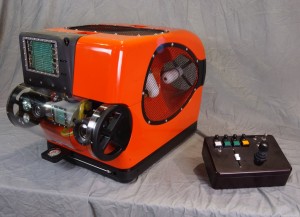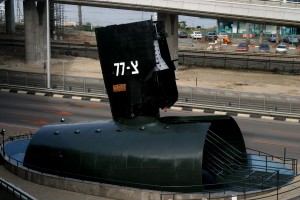
ROVs – Remotely Operated Vehicles – allow us to look and touch at the bottom of the ocean where no human can survive. Most deep sea ROVs can dive to 6,000 m (20,000 feet), allowing them to reach 95% of the ocean floor. At that depth, water pressure approaches 9,000 psi! Tethered to a research vessel with a long cable that provides power and receives images and telemetry, the ROV uses thrusters to move and position itself to get the best view or grab the most valuable sample with its robot arms. ROVs come in many sizes, from the monster machines that service offshore oil installations or bury cables, to the suitcase-sized SpiderBOTs made famous in the movie Titanic.
In 1999, Nauticos used an ROV operated by the Naval Oceanographic Office to discover wreckage from the Japanese aircraft carrier Kaga, sunk at the Battle of Midway in 1942. You can read about this project and the history of the battle in The Search for the Japanese Fleet. Nauticos and the SeaWord Foundation plan to work with NOAA’s Deep Discoverer ROV in early March to return to the site and capture hi-def video of the wreckage, far superior to what was possible nearly 20 years ago.

Nauticos also used the ROV Remora in 1999 to identify the wreck of the Israeli submarine Dakar, and returned to the site the following year to recover a 4-ton artifact from the seafloor at 10,000 feet. Operators on the ship high above watched through remote cameras to operate mechanical arms and manipulators to attach a lifting line to the structure of the artifact so that a winch could slowly lift it to the surface. After nine hours, the conning tower of Dakar emerged from the sea after resting there for 31 years. The tower is now on display at the Naval Museum in Haifa, a memorial to the 69 sailors who lost their lives on the ill-fated warship. This story is chronicled in Never Forgotten: The Search and Recovery of Israel’s Lost Submarine Dakar. This 3-minute video, produced for the Maryland Science Center Titanic exhibition, includes scenes from that spectacularly successful Dakar recovery mission.

